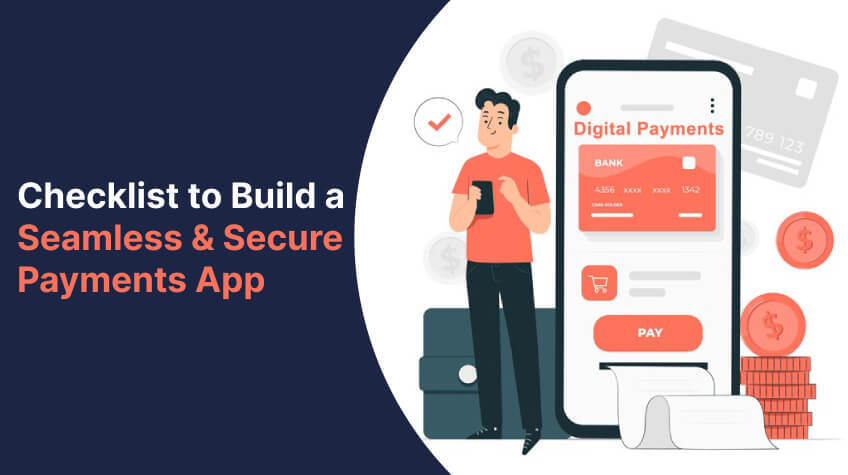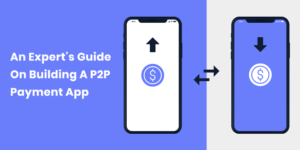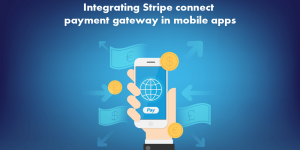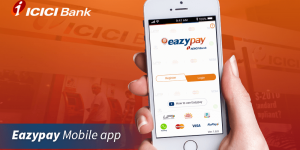
A secure payment application is fundamental for any developer. Verifying customer accounts and managing sensitive financial data are among the tasks prioritizing security in protecting customers. Ensuring the triumph of your application. Follow this comprehensive checklist to build a secure payments app and ensure its reliability and robustness, with essential key steps outlined.
By following the guidelines in this blog, and remaining current on industry best practices, you can feel confident that your application is taking all required measures to secure customer information. Let us initiate the process of ensuring that your payment application satisfies the toughest security standards!
Grasping the Payment Card Industry Data Security Standard (PCI DSS)
The Payment Card Industry Data Security Standard (PCI DSS) must be followed by developers when creating payment apps. This standard stipulates the requirements for securely processing sensitive cardholder data during payment transactions.
Its twelve requirements include network protection upkeep, safeguarding cardholder information as well as routine inspection & evaluation of security measures for system integrity. Ensure your payment by becoming familiar with these requirements. The app serves to prevent data breaches and safeguard your clients’ information.
Legal compliance requires adherence to the PCI DSS. When responsibly handling user information, trust is built. Building an application for payments that are secure and compliant with industry standards safeguards user data and establishes credibility for you as an esteemed provider of reliable financial services.
Securing Web Applications: authentication and authorization best practices
Secure payment app development necessitates careful consideration of authentication and authorization. Financial losses and data breaches may occur due to improper security measures allowing for the compromise of user accounts. Developers can enhance the security of web applications by following several best practices.
Users must create complex passwords consisting of at least eight characters in length as mandated by developers’ strong password policies. Developers should hash and salt stored passwords in the database to protect sensitive user information against attackers.
In the event of a data breach, administrators should execute this action. Additionally, developers can enhance security by implementing two-factor authentication (2FA), which requires users to verify their identity using a second factor. Valid options for the second factor include biometrics or a one-time passcode (OTP).
Proper implementation of access controls throughout the application is crucial. Restricting access based on roles and permissions and enforcing SSL/TLS encryption for all web app and server communications can be accomplished. Ensuring compliance with current industry standards requires regularly reviewing access control policies.
Encryption: protecting sensitive data and communication
To create a secure payment application, it’s essential to follow these critical steps
- Incorporate encryption for secure data handling.
- Encode information to limit access to authorized users.
- Protect sensitive data such as payment details and login credentials.
- Utilize strong cryptographic algorithms like AES-256 or RSA.
- Implement secure key management procedures.
- Regularly renew and accurately configure SSL/TLS certificates.
- Prevent data interception and unauthorized access by attackers.
- Prioritize encryption for overall security.
Protecting against common vulnerabilities: cross-site scripting (XSS), SQL injection, and more
Cross-site Scripting (XSS) or SQL injection is among the greatest threats to the security of a payment app, as it can be exploited in malicious attacks that pose serious risks. Compromising sensitive user information, these attacks can cause financial losses. Sensitive data theft, transaction detail alteration, and complete application takeover are all possible for an attacker with these types of attacks.
Proactivity on the part of the developer community is essential when it comes to protecting against these types of attacks. Measures like input validation or parameterized queries must be implemented. The screening of any data a user enters for malicious content is ensured before processing it. Parameterized queries separate user input from the code that executes database queries, which reduces the risk of SQL injection.
Staying ahead of potential attacks requires keeping up with the latest trends in vulnerabilities and exploit techniques. Developers can ensure the protection of a payment app from common threats through continuous vulnerability testing and implementation of best security practices. Users can receive secure transactions from the app.
Writing code with security in mind: following secure coding practices
Developers must prioritize secure coding practices when building a secure payments app. Using secure coding, user data can be protected from malicious actors, ensuring the code is resilient to attacks and vulnerabilities.
For better results, it is recommended that developers follow the best practices and use clearly defined coding standards. Measures such as validating all inputs and outputs, avoiding hard-coded credentials or keys, and implementing multi-factor authentication can help ensure security.
Moreover, utilizing trustworthy libraries and frameworks can aid in decreasing the probability of vulnerabilities in your code. Building a strong foundation for developers’ payment apps is possible by starting with secure coding practices from the beginning of development. Potential security threats will be unable to damage this foundation.
Testing and debugging: ensuring security throughout the development process
Developers should undergo a critical testing and debugging phase to develop a secure payments app. They need to conduct testing at each stage of development to identify possible security vulnerabilities. They should perform all tests, including functionality, integration, and penetration testing.
Functionality testing ensures that the app’s features perform as intended. It ensures the seamless operation of different components without any security loopholes. Integration testing is important to verify the proper integration of various components.
Penetration testing involves conducting a simulated attack on the app to identify potential exploits. This helps in uncovering security weaknesses and addressing them proactively.
Developers should promptly debug when issues are detected during development or testing. This proactive approach helps prevent bigger security issues in the future. They can use debuggers and other automated tools to swiftly pinpoint and correct coding issues.
Compliance and auditing: maintaining security standards post-launch
When launching a Payments App, developers’ key concern is maintaining security standards. After launch, regular compliance and auditing processes must take effect to maintain the app’s safety. For instance: A professional fintech app development company will have its processes and methodologies set and when developing a secure payment app additional care needs to be taken. The developers working on the fintech project can guide the best practices for ensuring this happens, such as rigorous code reviews, user access management strategies, and penetration testing.
These processes help ensure the app meets company-specific and industry-wide security standards post-launch. These measures give app developers peace of mind knowing that their Payments App is compliant, secure, and ready to go.
Developing a response plan: preparing for potential security breaches
A security incident is still possible despite all efforts to ensure security and prevent breaches. An established response strategy is imperative for swift and efficient action in case of any breaches.
Developing a response plan begins with identifying potential risks that can cause security breaches. Risk can manifest in cyber-attacks, human errors, and natural calamities. After identifying these risks, a step-by-step response plan for each scenario is important. Explicit instructions detailing whom to inform about what tasks need completing and how communications will occur must form part of this plan.
Keeping up with evolving technologies or emerging threats requires regular review and updating of your response plan. Being equipped with an updated response plan helps you handle security incidents more effectively. Your customers and business can be less impacted with some effort.
Building a secure payments app is within reach
Businesses require secure payment apps to safeguard their customers’ sensitive information during digital transactions in this modern age. Ensure that your payments app meets the highest security and compliance standards by following this developer’s checklist guidelines.
Building a secure payments app can be challenging, but success is within reach with persistence and dedication to best practices. Regarding security, remember to protect your customers and enhance your reputation as a trustworthy and dependable business in today’s digital landscape.






